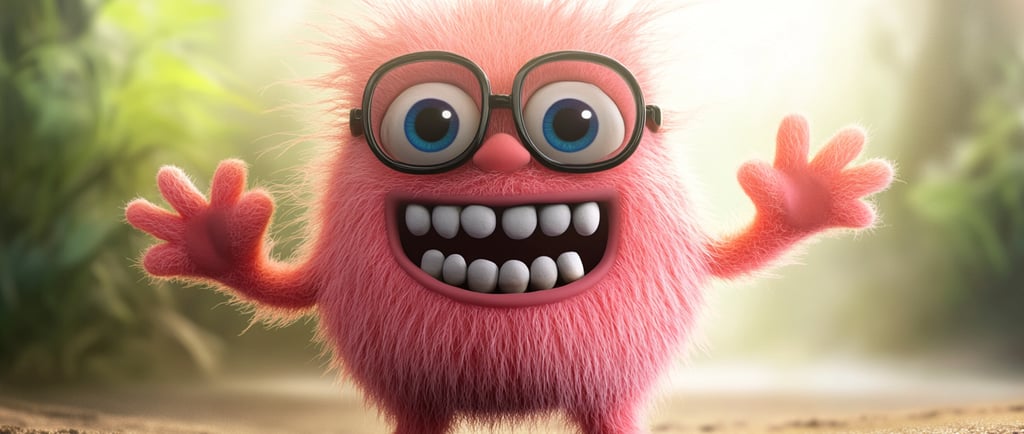Transform Stories with AI-Powered Narratives
Discover how AI is revolutionising storytelling by bringing cultural expressions to life. Explore the blend of past and present narratives through advanced AI technology.


Imagine stepping into a world where stories are not just told but experienced. A world where the boundaries between past and present blur, and cultural expressions come to life in ways never before imagined. Welcome to the realm of AI-powered narratives, where technology and creativity converge to redefine storytelling. In this article, we will explore how AI is transforming the way we create and consume stories, from preserving cultural heritage to crafting immersive experiences that captivate audiences worldwide.
The Evolution of Storytelling
Storytelling has been an integral part of human culture since time immemorial. From ancient myths and legends to modern-day novels and films, stories have served as a means to pass down knowledge, values, and traditions. However, the digital age has brought about a significant shift in how stories are told and consumed. The advent of AI technology has opened up new possibilities, allowing storytellers to create more interactive and personalized experiences.
One of the most significant advances in AI-powered storytelling is the ability to analyze vast amounts of data and generate narratives that resonate with specific audiences. For instance, AI can examine historical texts, cultural artifacts, and contemporary media to create stories that blend the past with the present. This not only preserves cultural heritage but also makes it more accessible and engaging for modern audiences.
Moreover, AI can enhance the creative process by providing tools for generating characters, plotlines, and even dialogue. This allows storytellers to experiment with different narratives and explore new creative directions. For example, AI-generated characters can be programmed to evolve based on audience feedback, creating a dynamic and interactive storytelling experience.
Preserving Cultural Heritage
Cultural heritage is a vital aspect of our collective identity, and preserving it is essential for future generations. AI technology plays a crucial role in this endeavor by digitizing and restoring cultural artifacts, making them accessible to a global audience. For instance, AI can analyze ancient texts and artifacts to create digital replicas that can be explored in virtual reality. This not only preserves the original artifacts but also allows people to interact with them in new and immersive ways.
Furthermore, AI can help in the reconstruction of lost or damaged cultural heritage sites. By analyzing historical data and images, AI can generate detailed 3D models of these sites, allowing people to experience them as they once were. This is particularly important for sites that have been destroyed by natural disasters or conflicts, as it ensures that their cultural significance is not lost.
Case Study: The Digital Restoration of Notre-Dame
The fire that ravaged Notre-Dame Cathedral in Paris in 2019 was a tragic loss for cultural heritage. However, AI technology played a crucial role in the restoration efforts. By analyzing historical data and images, AI was able to generate a detailed 3D model of the cathedral, allowing architects and engineers to plan the restoration with unprecedented accuracy. This not only helped in preserving the cathedral's cultural significance but also ensured that future generations could experience its beauty and history.
Creating Immersive Experiences
AI-powered narratives go beyond traditional storytelling by creating immersive experiences that engage multiple senses. Virtual reality (VR) and augmented reality (AR) are two technologies that have significantly benefited from AI advancements. For example, AI can generate realistic 3D environments and characters, allowing users to step into the story and interact with it in real-time.
Moreover, AI can personalize these experiences based on user preferences and behaviors. By analyzing data from user interactions, AI can adapt the narrative to create a unique and engaging experience for each individual. This level of personalization ensures that audiences remain captivated and invested in the story.
Example: The AI-Powered Museum Experience
Imagine visiting a museum where the exhibits come to life. As you approach a painting, the characters in the artwork begin to move and interact with you, telling their story in a way that is both educational and entertaining. This is the power of AI-driven AR, which can overlay digital information onto the real world, creating an immersive and interactive experience.
The Role of AI in Content Creation
AI is not just a tool for enhancing existing stories; it is also a powerful asset for content creation. By analyzing trends and audience preferences, AI can generate new story ideas and concepts that resonate with modern audiences. For example, AI can identify popular themes and genres, helping content creators to develop stories that are more likely to succeed.
Additionally, AI can assist in the writing process by generating dialogue, plotlines, and even entire scripts. This not only saves time but also allows creators to explore different narrative directions and experiment with new ideas. For instance, AI-generated dialogue can be programmed to adapt based on audience feedback, creating a more interactive and engaging storytelling experience.
Case Study: AI-Generated Screenplays
In recent years, AI has been used to generate screenplays for films and television shows. By analyzing successful scripts and identifying common themes and structures, AI can create new stories that are both original and appealing to audiences. This not only speeds up the creative process but also ensures that the final product is more likely to resonate with viewers.
Ethical Considerations and Challenges
While AI-powered narratives offer numerous benefits, they also present ethical considerations and challenges. One of the primary concerns is the potential for cultural appropriation and misrepresentation. As AI generates stories based on data, there is a risk that it may inadvertently perpetuate stereotypes or misinterpret cultural nuances.
To address this, it is essential to involve diverse teams in the development and implementation of AI-powered narratives. This ensures that different perspectives and cultural sensitivities are taken into account, resulting in more authentic and respectful representations.
Additionally, there are concerns about the potential for AI to replace human creativity. While AI can generate new ideas and concepts, it is important to remember that it is a tool to augment, not replace, human creativity. The collaboration between AI and human storytellers can lead to innovative and compelling narratives that would not be possible otherwise.
Example: Collaborative Storytelling
One approach to addressing these challenges is collaborative storytelling, where AI and human creators work together to develop narratives. For example, AI can generate initial story ideas and plotlines, which human writers can then refine and expand upon. This ensures that the final product is both creative and culturally sensitive, benefiting from the strengths of both AI and human intelligence.
The Future of AI-Powered Narratives
The future of AI-powered narratives is filled with exciting possibilities. As technology continues to advance, we can expect to see even more immersive and interactive storytelling experiences. For instance, AI can be used to create dynamic narratives that adapt in real-time based on user interactions, creating a unique experience for each individual.
Moreover, AI can help in the preservation and dissemination of cultural heritage, ensuring that future generations have access to the rich tapestry of human history and creativity. By digitizing and restoring cultural artifacts, AI can make them accessible to a global audience, fostering a greater understanding and appreciation of diverse cultures.
Vision: The Global Cultural Archive
Imagine a global cultural archive where people from around the world can access and experience cultural heritage in immersive and interactive ways. This archive could include digital replicas of historical sites, virtual reality experiences of cultural events, and AI-generated stories that bring the past to life. Such an archive would not only preserve cultural heritage but also promote cultural exchange and understanding.
Conclusion
In conclusion, AI-powered narratives are transforming the way we tell and experience stories. By blending past and present, preserving cultural heritage, and creating immersive experiences, AI is opening up new possibilities for storytelling. However, it is essential to address the ethical considerations and challenges that come with this technology. As we look to the future, the collaboration between AI and human creativity promises to bring us even more compelling and culturally rich narratives. So, let's embrace this technological revolution and continue to push the boundaries of storytelling.
FAQ
Q1: What is AI-powered storytelling? AI-powered storytelling is the use of artificial intelligence to create, enhance, and personalize narratives. This includes generating characters, plotlines, dialogue, and even entire scripts, as well as creating immersive and interactive experiences through technologies like VR and AR.
Q2: How does AI help in preserving cultural heritage? AI helps in preserving cultural heritage by digitizing and restoring cultural artifacts, creating digital replicas of historical sites, and generating immersive experiences that allow people to interact with cultural heritage in new and engaging ways.
Q3: What are the ethical considerations in AI-powered narratives? Ethical considerations include the potential for cultural appropriation and misrepresentation, as well as concerns about replacing human creativity. It is important to involve diverse teams in the development of AI-powered narratives to ensure authentic and respectful representations.
Q4: How does AI enhance the creative process? AI enhances the creative process by providing tools for generating characters, plotlines, and dialogue, as well as analyzing trends and audience preferences to develop new story ideas and concepts that resonate with audiences.
Q5: What is the role of VR and AR in AI-powered narratives? VR and AR play a crucial role in AI-powered narratives by creating immersive and interactive experiences. AI can generate realistic 3D environments and characters, allowing users to step into the story and interact with it in real-time.
Q6: How can AI-generated stories be made more culturally sensitive? AI-generated stories can be made more culturally sensitive by involving diverse teams in their development and implementation. This ensures that different perspectives and cultural sensitivities are taken into account, resulting in more authentic and respectful representations.
Q7: What is collaborative storytelling in the context of AI? Collaborative storytelling in the context of AI refers to the process where AI and human creators work together to develop narratives. AI can generate initial story ideas and plotlines, which human writers can then refine and expand upon, ensuring that the final product is both creative and culturally sensitive.
Q8: How does AI personalize storytelling experiences? AI personalizes storytelling experiences by analyzing data from user interactions and adapting the narrative to create a unique and engaging experience for each individual. This level of personalization ensures that audiences remain captivated and invested in the story.
Q9: What is the future of AI-powered narratives? The future of AI-powered narratives includes even more immersive and interactive storytelling experiences, dynamic narratives that adapt in real-time based on user interactions, and the preservation and dissemination of cultural heritage to a global audience.
Q10: How can AI be used to create a global cultural archive? AI can be used to create a global cultural archive by digitizing and restoring cultural artifacts, creating virtual reality experiences of cultural events, and generating AI-powered stories that bring the past to life. This archive would promote cultural exchange and understanding by making cultural heritage accessible to a global audience.
Resources
Datasumi - Explore open data initiatives and how AI is being used to preserve cultural heritage.
AI in Storytelling - Learn more about the applications of AI in storytelling and content creation.
Ethical Considerations in AI - Delve into the ethical considerations and challenges of AI-powered narratives.
Virtual Reality and AI - Discover how VR and AI are revolutionizing immersive storytelling experiences.
Cultural Heritage Preservation - Explore the role of AI in preserving and disseminating cultural heritage.
Author Bio
Alexandra Turner is a digital storyteller and AI enthusiast with a background in cultural studies and technology. She is passionate about exploring the intersection of AI and storytelling, and how technology can be used to preserve and share cultural heritage.
